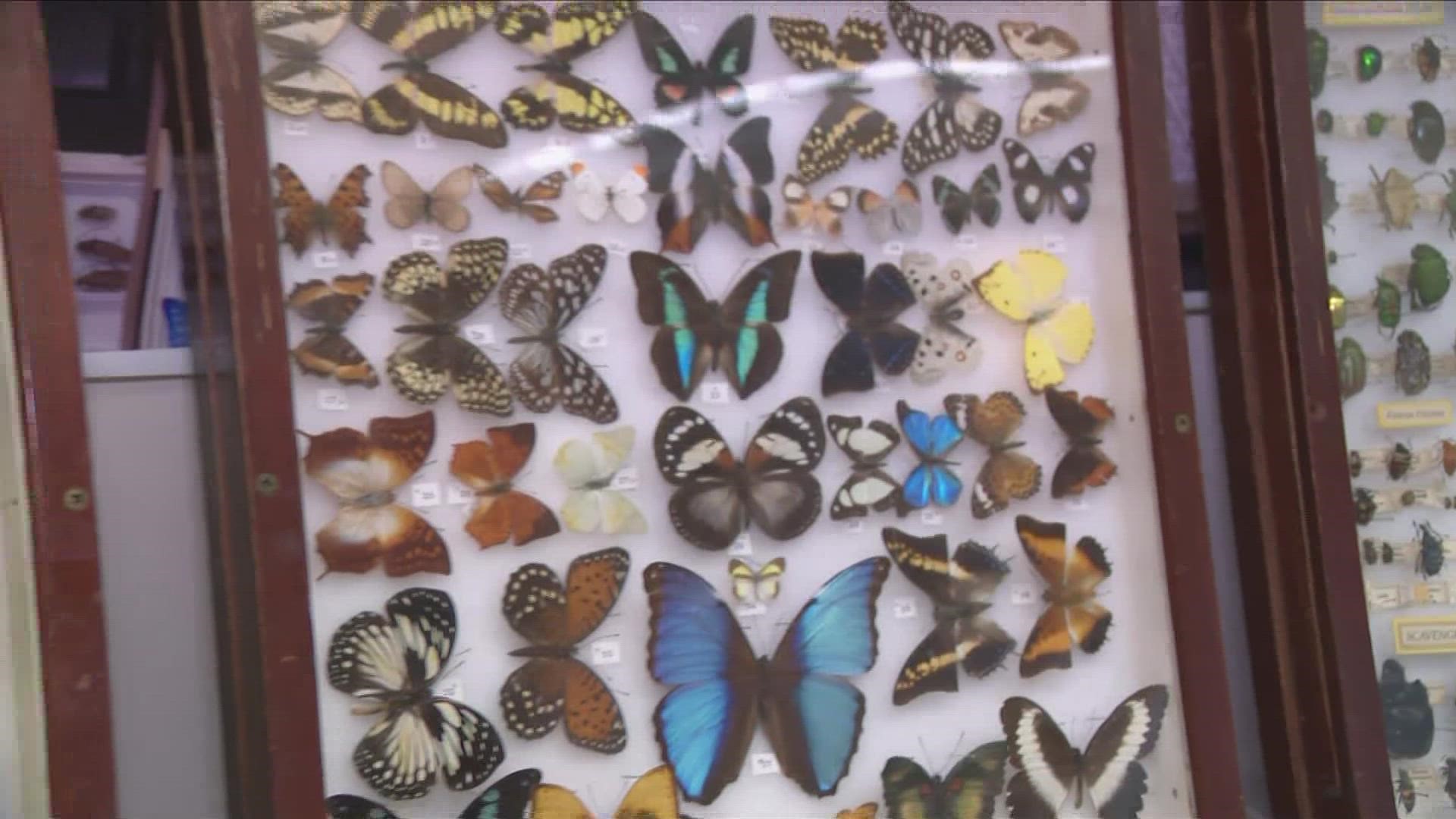WASHINGTON — Summer bugs -- like bees, mosquitos, and beetles -- are already out and about in the DMV, and it has to do with climate change, according to a bug expert.
Dr. Floyd Shockley serves as the Entomology Collections Manager at the Smithsonian Museum of Natural History, so he spends his day among thousands, if not millions, of insects. WUSA9 met up with him at the museum's collection to talk about the bugs you can expect to see this summer -- and when.
"Insects have already started to emerge," Shockley said. "Those that were out in the early spring are starting to build up in numbers."
Some of those include tics, butterflies, beetles, bees and mosquitos.
"We're describing new species, but we're also tracking species we already know about, how their distributions change in space and time, and both of those things are impacted by climate change," he said.
He said they've been seeing species move north that normally congregate south, for example.
Dr. Shockley said as is the case with D.C.'s famous cherry blossoms, the bugs are blooming earlier.
In 2021, the focus was on brood 10 cicadas, and Dr. Shockley said we could still see some in the area.
"People here in the Washington area may see what are known as stragglers," he said. "They're periodical cicadas that for one reason or another have gotten off cycle and so it's possible that you're going to see some. They get off cycle by one year or four years, so you may actually see some straggling brood 10s emerge this year. It won't be nearly what we saw last year."
Shockley said we'll see even more activity over the next month or so, with the Monarch Butterfly making an appearance.
"These guys have been in decline over the last few decades, but we're actually seeing recovery in this species, thanks to conservation efforts as well as efforts to plant the correct kind of milkweed plants that their larvae need to survive," Dr. Shockley said.
He said collections like the one at the Museum of Natural History are crucial to studying the evolution of species and monitor upcoming trends.
"We have over 400,000 species just in entomology. It allows us to study things that would be difficult to study in anything else. We can look at things like climatological change and see how species are changing their distributions over time," Dr. Shockley said. "We can see how they are invading places that they've never been before, and all of that has impacts obviously on us."
He said scientists have also been noticing an insect decline over the last few decades, which would have profound impacts on the globe's entire ecosystem.

